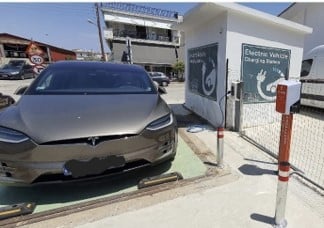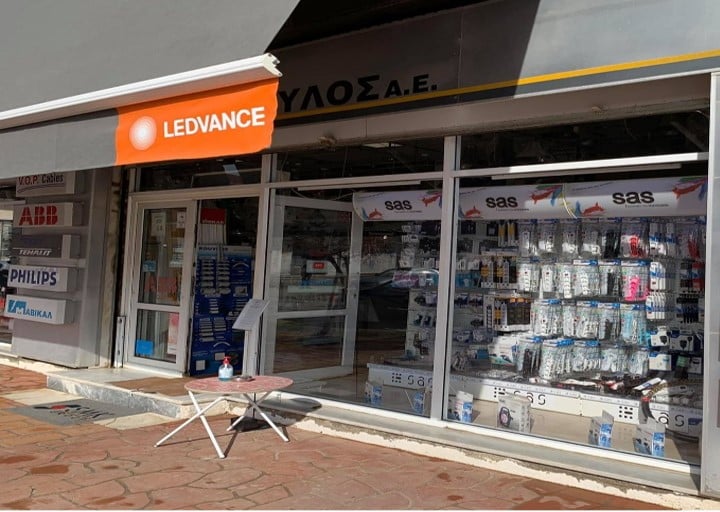Location
Thessaloniki, Greece
Key Partners
Lead: CERTHWVT, INNOQUE, SUITE5ENERB, BETTARC, LEICARTIF
Main Solutions
Demand Response Strategies (DR)Dynamic PricingEnergy Saving AwardsOptimal Management Strategies etc.

Description
The Greek demo-site is located in the city centre of Thessaloniki and is composed by a set of 50 residential buildings, 3 energy retail stores and one large commercial facility managed by WVT as utility company together with INNO as energy efficiency services provider. Implementation of optimal management strategies taking advantage of RES (both from WVT grid and from the PV projected to be installed in car park roof), BESS and EV charging will be tested in the pilot. In this sense, the demo site will use OCPP for monitoring and control of Electric Vehicle Supply Equipment to Developments in the field of disaggregation techniques will be implemented to obtain as much detailed information as possible to enable cross-selling among devices and the provision of a diverse set of flexibility services. Moreover, the buildings will make use of CERTH’s Fog Enabled Intelligent Device (FEID).
Innovations and Technological Advances
Non-Intrusive Load Monitoring (NILM), also known as load disaggregation, is a technique used to deduce which appliances are being used within a building based on changes in the aggregate energy consumption data. Instead of monitoring each device with an individual meter, NILM tracks the total energy consumption through a single point of measurement, typically the main electrical service entrance. By analyzing variations in voltage and current, NILM algorithms can identify unique electrical signatures of individual appliances, estimate their power consumption, and determine their operational status over time. This approach enables energy efficiency insights, appliance-level consumption tracking, and personalised energy-saving recommendations without the need for extensive sensor networks.
NILM application in retail stores and commercial facility to disaggregate loads.
Support both self-consumption maximisation and response to DSR signals from Distribution System Operators for congestion management purposes. This would include the development of algorithms for estimating available flexibility (periods when charging schedule can be altered and charging can be regulated for compatible stations) and for evaluating the optimal alteration of the charging cycles based on a dynamic-programming-based optimization engine solving an adjusted unit commitment problem for different cases (whether for self-consumption, benefitting from TOU/ price arbitraging, provision of ancillary services to the grid).



Demonstrators
-
Spain
The demonstration in Spain is taking place mainly in Zaragoza and the surrounding area (Aragon region in the North-East of Spain) and a secondary demonstration will take place in Asturias , Northern Spain (Check Map). With a sizeable portion of its population concentrated in its capital city, Zaragoza, and a sizeable industrial and service sector, Aragon has a high energy consumption rate. The rest of Aragon is mostly rural with a relatively dispersed population and a lot of renewable energy plants. All energy users and prosumers should be brought into flexible markets to help with the integration of these renewable sources. On the other hand, the secondary demonstrator (cluster #3) represents other side of Spanish consumers: big industrial energy demanders. For this reason, the Spanish demonstration site includes all types of energy consumers and prosumers i.e., office (cluster #1 and cluster #2), industrial buildings (cluster #3) and residential (cluster #4).
-
Switzerland
The Swiss demo site is taking place in the urban Motta District in Massagno, a suburban local Energy Community (EC), with the addition of a district heating plant located in Capriasca. All the prosumers in the aforementioned urban district belong to the AEM distribution network (local DSO) and are served by a 630 kVA substation, which is located in the neighborhood. Additionally within the urban district, there is a PV plant with a total installed capacity of 59 kWp (55 MWh of annual production) on the roof of the elderly care home in order to serve the needs of the buildings (first to the elderly care home, then to the rest of the buildings) and then any additional electricity is injected by the grid. Last but not least, A V2G-ready EV charging column (DC, 10 kWe) together with a car-sharing vehicle (Honda e – 35.5 kWh of electric storage) is also part of the community and can be used both as flexibility and as a battery storage solution. The pilot site also leverages two 11 kWe public charging stations for EV that are available to the citizen, increasing the e-mobility aspect of the site.
-
Bulgaria
Energy Consumption for ABILIX servers only – 35 MWh/y. Around 10 GWh/y for the whole DataCenter. Evenly distributed with no Seasonal peaks for servers. Cooling electricity consumption is generally 66% lower in Q4/Q1 than in Q2/Q3. Zero emissions (Green energy certificates from the energy utilities supplying power to the Data Centers, mainly fed by nuclear energy). Energy storage around 100 Кwh of batteries